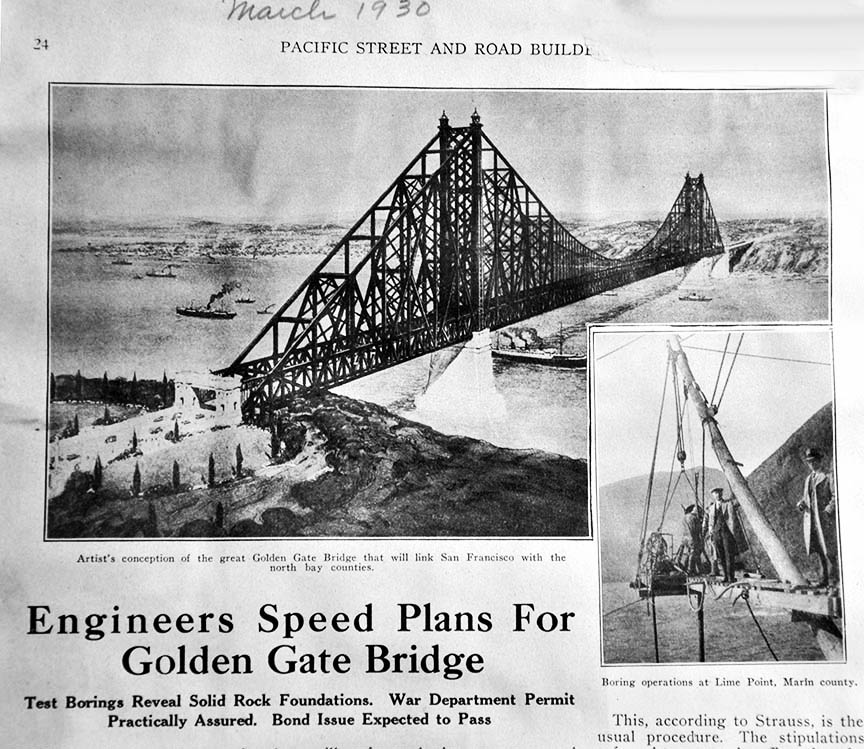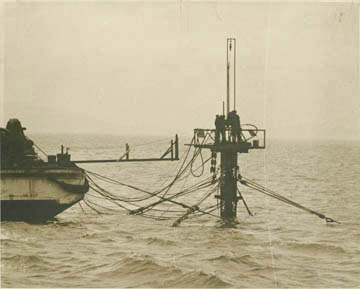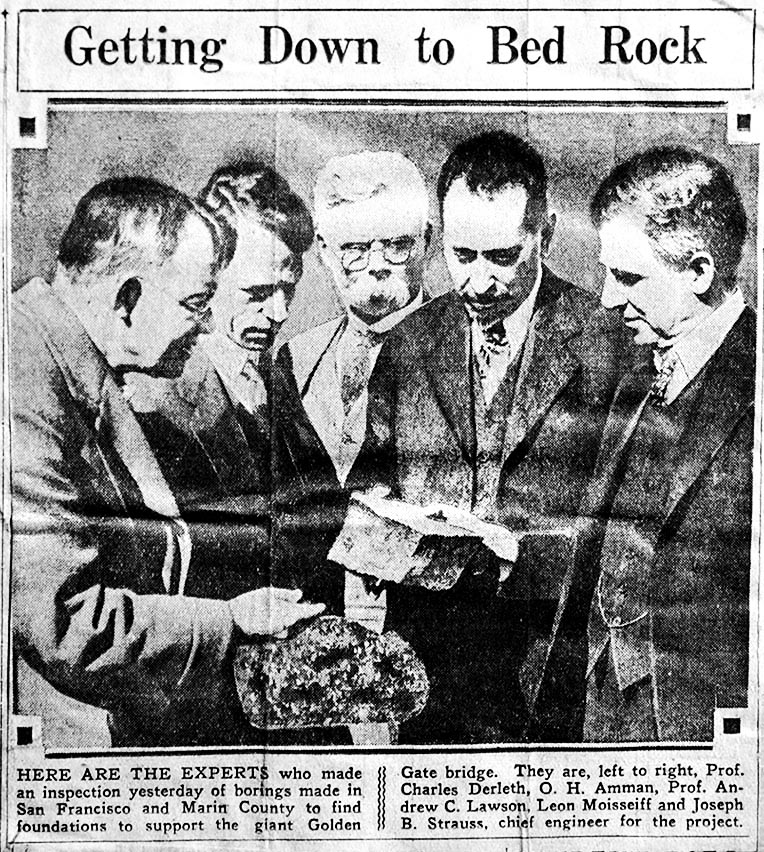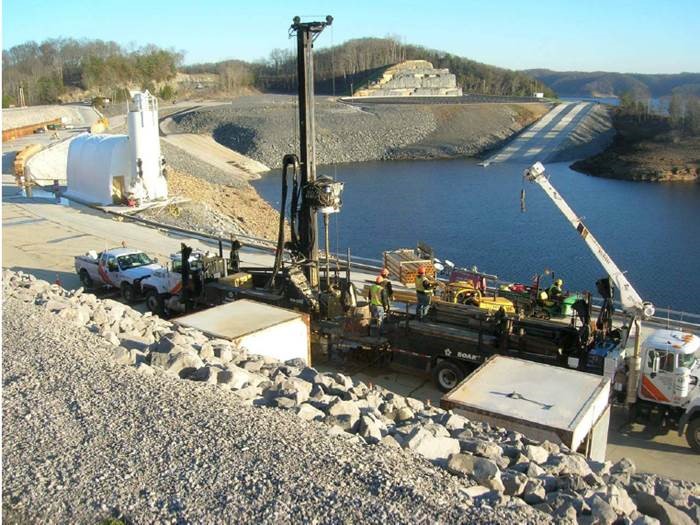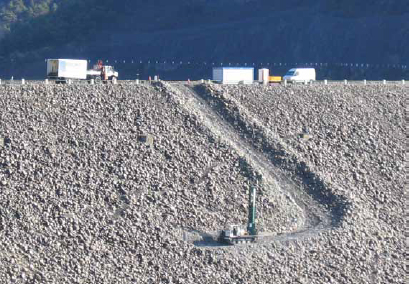COMPANY
mayo 26, 2020
Bridging the Past
Drilling has many purposes and the name Boart Longyear is often tied to drilling for core samples in mineral exploration, dewatering for groundwater control, and water well drilling for municipal and industrial applications. The company has been all about drilling since its beginnings in 1890, when founder Edmund J. (E.J.) Longyear sank his first diamond drill hole on the Minnesota Mesabi Iron Range in the midwestern United States.
What many people may not know is that the drillers and engineers of Boart Longyear have been involved in some exciting historical drilling projects in a variety of other applications, too. Drilling equipment for moon exploration is one such example (read Drilling Beyond Earth); but closer to home, the company has assisted with projects to explore and define foundation and structural integrity below the earth or even under bodies of water.
Test drilling for transportation tunnels
In the late 1920s, members of the Longyear team were contracted to test drill the route of a proposed vehicular tunnel under the East River to connect Manhattan to Brooklyn in New York, USA. The tunnel was intended to reduce transportation congestion due to the slow and unreliable ferry service that existed at the time. The Longyear company provided preliminary boring samples used to determine what was beneath the surface of the river. Characterizing the samples’ type of rock and its hardness allowed geologists and engineers to determine what equipment should be used for tunneling, how long it should take, and at what cost. Although the initial tunnel project didn’t receive support and funding, it laid the groundwork for a later project—the Brooklyn-Battery Tunnel—which was started in 1940 and opened in May of 1950.
Boring for foundation samples for the Golden Gate Bridge
A similar challenge of traversing a wide body of water required assistance from the Longyear team in 1929. Joseph B. Strauss, a visionary engineer, was tasked with his team to design the proposed Golden Gate Bridge in San Francisco, California, USA. As chief engineer, Strauss requested the services of Longyear to investigate the rock formations beneath the San Francisco Bay where the bridge would be constructed. Longyear started boring in the Bay in November 1929 along the sites of the proposed piers and anchorages. [i]
Due to the turbulent waters of the channel, the drillers had to be creative as to how they would retrieve the core samples beneath the tumultuous surface. Strauss was big on safety, requiring bridge workers use safety lines, work over safety nets, and even wear some of the first hard hats. The Longyear crew constructed a platform over the water supported by a boom—an A-frame—and guy-wires anchored to the shore. The platform allowed the team to suspend their drilling equipment securely on top and safely above the bay. Despite the problems of deep water, ocean traffic, storms, and tidal movement, the team was able to finish the work on schedule with complete core sample recovery.
The geological samples and subsequent data supplied to Strauss proved that the rock formations could bear the weight of the foundations and enable the huge bridge structure to be built. The information was provided in a full report to the board of engineers in February 1930 and the bridge was determined to be “feasible economically and structurally.”
This great news meant Strauss and his design team could move on to the next phases of engineering and constructing the Golden Gate Bridge. In gratitude for Longyear’s contribution, Strauss wrote, “The work done by your company, having been entirely satisfactory, and the relations between us and your drillers having been cordial and pleasant, I am glad to make immediate payment of the balance due.” [ii]
Payments received by the company totaled close to $15,000 for the boring contract. It wasn’t for another three years (January 1933) that construction began and a groundbreaking ceremony for the bridge was held. The Golden Gate Bridge was completed in May 1937 at a total cost of $35,500,000.
Click below images to view larger.
From left to right
Images 1 and 2: “Engineers Speed Plans for Golden Gate Bridge” - A Pacific Street and Road Builder article from March 1930 stating “test borings reveal solid rock foundations and showing a photo of boring operations at the Lime Point side of the bridge in Marin County, California.
Image 3: “Borings Started for Gate Span” – Photos shows in the Vallejo California Chronicle, Sebastopol California Times, and Cresent City Triplicate newspapers on November 29, 1930. The article shows a photo of Longyear’s diamond-tipped drills used for bore sampling the rock at the San Francisco end of the bridge, next to Fort Point.
Image 4: “Getting Down to Bedrock” – A San Francisco Examiner article, dated February 14, 1930, picturing engineers, including Strauss, inspecting boring samples from the Golden Gate Bridge project.
Testing for hydro dam safety
Shortly after the Golden Gate boring project, the Longyear company became involved with drilling projects for the construction of hydro dams around the country. In the 1930s, Longyear drillers did test borings for several of the twenty planned dams under the jurisdiction of the Tennessee Valley Authority. These dams were part of a comprehensive plan for the reclamation and development of the Tennessee River—covering an area of more than forty thousand square miles and over seven states.[iii]
Later twentieth-century construction-type projects for Longyear drillers included boring for core samples for the Missouri River Project, and the first foundation test borings for the Fort Peck Dam in Montana—the project’s first major hydro dam.
Sonic drilling advancements for today’s construction projects
Today, Boart Longyear continues to assist with construction and rehabilitation projects around the world using even more advanced technologies and equipment. The company regularly uses sonic drilling technologies which are ideal for avoiding many of the challenges experienced with conventional drilling methods.
Sonic drilling offers quality control in conjunction with the production and installation of geotechnical construction elements. The sonic method can actually eliminate the need for circulation-type drilling allowing the driller to work safely in situations that involve sensitive structures, vulnerable site conditions, difficult geology, or have restrictive conditions. Sonic drilling also provides measurements and samples to evaluate actual conditions across a given site during the progress of exploration and construction.
A few examples of Boart Longyear’s sonic drilling assistance with tunnel, bridge, and hydro dam projects in the twenty-first century include: [iv]
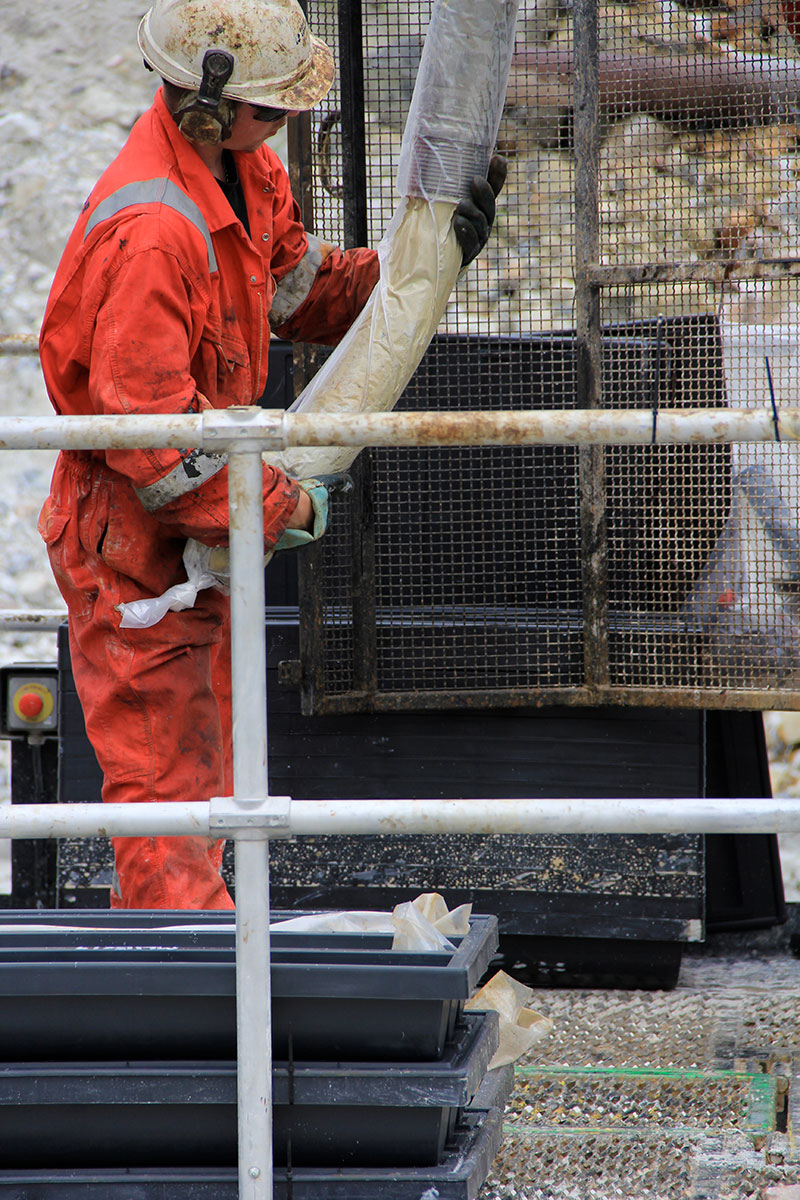
- Casing installation for the Boston Central Artery / Tunnel Project CO9A4, Massachusetts, USA. As part of the process of installing three jacked tunnels under the 13 railroad tracks at South Station in Boston, specialized sonic drilling was used to install casing through some of the most difficult combinations of historical fill materials—steel rails, brick tanks, woodpiles, granite seawalls, reinforced concrete slabs, track ballast rock, clay, stratified sands, till and weathered bedrock.
- Installation of a grout curtain at Clearwater Dam in Missouri, USA. The project required a drilling method with the ability to penetrate and sample both the body of the dam and its foundation without the use of air or water circulation. Sonic drilling was used to investigate a deep sinkhole and affected a remedial plan involving drilling 15-degree battered grout holes through embankment fill to construct a grout curtain.
- Sonic drilling comparison for a tunnel design pilot study on the Combined Sewer Overflow Control program, Anacostia River Project in Washington DC. Sonic drilling was used to perform continuous soil coring with approximately 100% core recovery and careful installation of multiple piezometers.
- Micro-pile installation testing near the Holland Tunnel in New Jersey, USA. Sonic drilling was compared with conventional drilling to advance micro-piles through silty sand overburden, overlying till, and schist. Not only was the sonic drilling 33% quicker for installation of the micro-piles, waste was also eliminated to nearly the volume of the sonic core, which minimized disposal costs.
Bridges, tunnels, dams, and even buildings are all safer because of the work done to investigate, test, and secure the foundations. Although considered a small contribution to these engineering marvels, Boart Longyear employees are proud of the heritage the company has earned and its involvement in each part of history.
For more information on Boart Longyear’s construction drilling capabilities, including sampling core, anchoring, micro-piling, jet grouting, and ground freezing, visit the overburden and construction tooling section.
[i] https://www.goldengate.org/bridge/history-research/bridge-construction/joseph-strauss/
[ii] Edmund J Longyear, and Walter R Eastman. 1984. “The Mesabi and Beyond”; Pg 181
[iii] Edmund J Longyear, and Walter R Eastman. 1984. “The Mesabi and Beyond”; Pg 192
[iv] George R Burnhart, Boart Longyear Technical paper. 2006. “Sonic Drilling Offers Quality Control and Non-Destructive Advantage to Geotechnical and Construction Drilling on Sensitive Infrastructure Sites.”
Golden Gate Bridge Photos from historical records, the Golden Gate Bridge, Highway and Transportation District and found here https://www.goldengate.org/exhibits/engineering-the-design/
Golden Gate Bridge Photo courtesy of Umer Sayyam
SIGN UP FOR THE INSITE DIGEST
Sign up for the INSITE Digest to receive articles like this and more.
SIGN UP NOW
DISCUSSION
-
На данном сайте у вас есть возможность приобрести онлайн мобильные номера различных операторов. Они могут использоваться для регистрации аккаунтов в разных сервисах и приложениях. В ассортименте представлены как долговременные, так и временные номера, которые можно использовать для получения сообщений. Это простое решение если вам не желает использовать личный номер в сети. купить номер тг Оформление заказа очень простой: выбираете необходимый номер, оплачиваете, и он сразу становится доступен. Попробуйте услугу уже сегодня!
-
На этом сайте представлена важная информация о лечении депрессии, в том числе у возрастных пациентов. Здесь можно найти методы диагностики и подходы по восстановлению. http://alternativeauto.info/__media__/js/netsoltrademark.php?d=empathycenter.ru%2Farticles%2Fmeksidol-dlya-chego-naznachayut%2F Особое внимание уделяется возрастным изменениям и их связи с эмоциональным состоянием. Также рассматриваются эффективные медикаментозные и немедикаментозные методы поддержки. Статьи помогут лучше понять, как справляться с угнетенным состоянием в пожилом возрасте.



